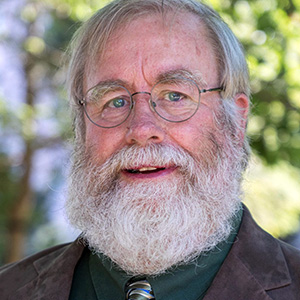Accreditation: Participant perspectives, in triplicate
The number of baccalaureate programs accredited by the American Society for Biochemistry and Molecular Biology has grown steadily. By the end of 2019, just six years after the accreditation program began, the number of accredited programs likely will reach the century mark.
Despite the program’s progress, many potential participants still ask, “Why should our program become accredited?”
 Jason Pough, Tony Rivas, and Khoa Tran, all undergraduates at Hampden-Sydney College in Virginia, work on a summer project designed around the proteomic analysis of mucus from local fish species.Hampden-Sydney College
Jason Pough, Tony Rivas, and Khoa Tran, all undergraduates at Hampden-Sydney College in Virginia, work on a summer project designed around the proteomic analysis of mucus from local fish species.Hampden-Sydney College
We have addressed this question in three ways. The first was via a survey of accreditation stakeholders recently published in the journal Biochemistry & Molecular Biology Education. The second was the recent publication of a letter describing details of the program in the journal CBE-Life Sciences Education. The third was by reaching out to representatives of three diverse accredited programs to learn how ASBMB accreditation has affected their programs:
Douglas McAbee of California State University Long Beach, a large (enrollment 37,000), public, master’s granting institution on the West Coast;
Michael Wolyniak of Hampden-Sydney College, a small (enrollment 1,100), private, primarily undergraduate institution in the mid-Atlantic region; and
Paul Black and Erin Sayer of the University of Nebraska, a large (enrollment 25,000), public, research-intensive university in the Midwest.
Overall, these programs reported the following benefits of accreditation:
| • | the focus on concept-based education in the accreditation application helps them critique and improve their programs; |
| • | guidelines from a national society help them strengthen the programs at their institution; and |
| • | accreditation of the program and certification of students through a common exam help create assessments for internal and external use. |
On the facing page, in chart form, are their more detailed answers to our questions.
Want to learn more about the ASBMB accreditation program? Go to the ASBMB accreditation page.

Enjoy reading ASBMB Today?
Become a member to receive the print edition four times a year and the digital edition monthly.
Learn moreFeatured jobs
from the ASBMB career center
Get the latest from ASBMB Today
Enter your email address, and we’ll send you a weekly email with recent articles, interviews and more.
Latest in Careers
Careers highlights or most popular articles

Building the blueprint to block HIV
Wesley Sundquist will present his work on the HIV capsid and revolutionary drug, Lenacapavir, at the ASBMB Annual Meeting, March 7–10, in Maryland.

Upcoming opportunities
Present your research alongside other outstanding scientists. The #ASBMB26 late-breaking abstract deadline is Jan. 15.

Designing life’s building blocks with AI
Tanja Kortemme, a professor at the University of California, San Francisco, will discuss her research using computational biology to engineer proteins at the 2026 ASBMB Annual Meeting.

Upcoming opportunities
#ASBMB26 late-breaking abstract submission opens on December 8. Register by Jan. 15 to get the early rate on our Annual Meeting.

Make your abstract stand out
Ensure your research is impossible to overlook. Get quick, practical reminders for crafting an abstract that attracts readers and helps you build connections at the conference.

Inside industry postdocs
As more Ph.D. scientists look beyond academia, industry postdocs offer a new kind of training, where mentorship meets mission-driven research. Fellows at Pfizer and Genentech share how these programs prepare them to translate discovery into impact.


